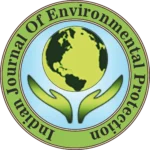IJEP 44(1): 17-27 : Vol. 44 Issue. 1 (January 2024)
Perini Praveena Sri*
ICFAI Foundation for Higher Education, Department of Economics, Faculty of Social Sciences, Hyderabad – 500 029, Telangana, India
Abstract
In contemporary times, it is imperative to consciously monitor the nature of air quality in our environment on a continuous basis due to poor quality of air. This enables us to realize the commitments of global nations towards the SDG 3.9 goal to reduce air contamination by 2030 in a robust manner. This research paper aims to prognosticate with empirical models that are developed to envisage real time air quality index (AQI) for PM2.5, PM10, NO, NO2, NOx, NH3, CO, SO2, O3, benzene, toluene and xylene during pre-covid as well as post-covid era during the reference period 2015 to 2020. The seasonal auto-regressive integrated moving average time series model was applied to forecast the AQI with a model accuracy of test data greater than 90%. The research study investigates empirically the recurrent lapses over a long-term period compliance (2010-2020) regarding non-compliances with green norms of MOEFCC for air pollution levels from the NTPS (Narla Tata Rao thermal power station). The empirical results in terms of abatement of air effluence of thermal plants have proved that green technological interpellations are a laudable establishment of a regenerative economy.
Keywords
Air quality index, Pollution, Thermal power plant, Seasonal variation
References
- Abrell, J. and S. Rausch. 2016. Cross-country electricity trade, renewable energy and European transmission infrastructure policy. J. Env. Eco. Manage., 79: 87-113.
- MoEF. 2018. Allotment of funds for expenditure on behalf of Ministry of Environment, Forest and Climate Change. Ministry of Environment, Forest and Climate change, New Delhi.
- Singh, V., et al. 2020. High resolution vehicular PM10emissions over megacity Delhi : Relative contributions of exhaust and non-exhaust sources. Sci. Total Env., 699:134273.
- CEA. 2019-2020. Annual report of India. Central Electricity Authority.
- Zhang, K., et al. 2019. Toward understanding the differences of PM2.5characteristics among five China urban cities. Asia Pacific J. Atmos. Sci., 56: 493-502.
- Zhao, C., et al. 2019. Estimating the contribution of local primary emissions to particulate pollution using high-density station observations. J. Geo-phys. Res. Atmos., 124:1648-1661.
- Perini, P. S. 2022. Optimization of solar energy efficiency : A quadratic regression approach. Lecture notes on mechanical engineering. pp 369-378.
- IEA. 2020. World energy outlook. International Energy Agency, Paris.
